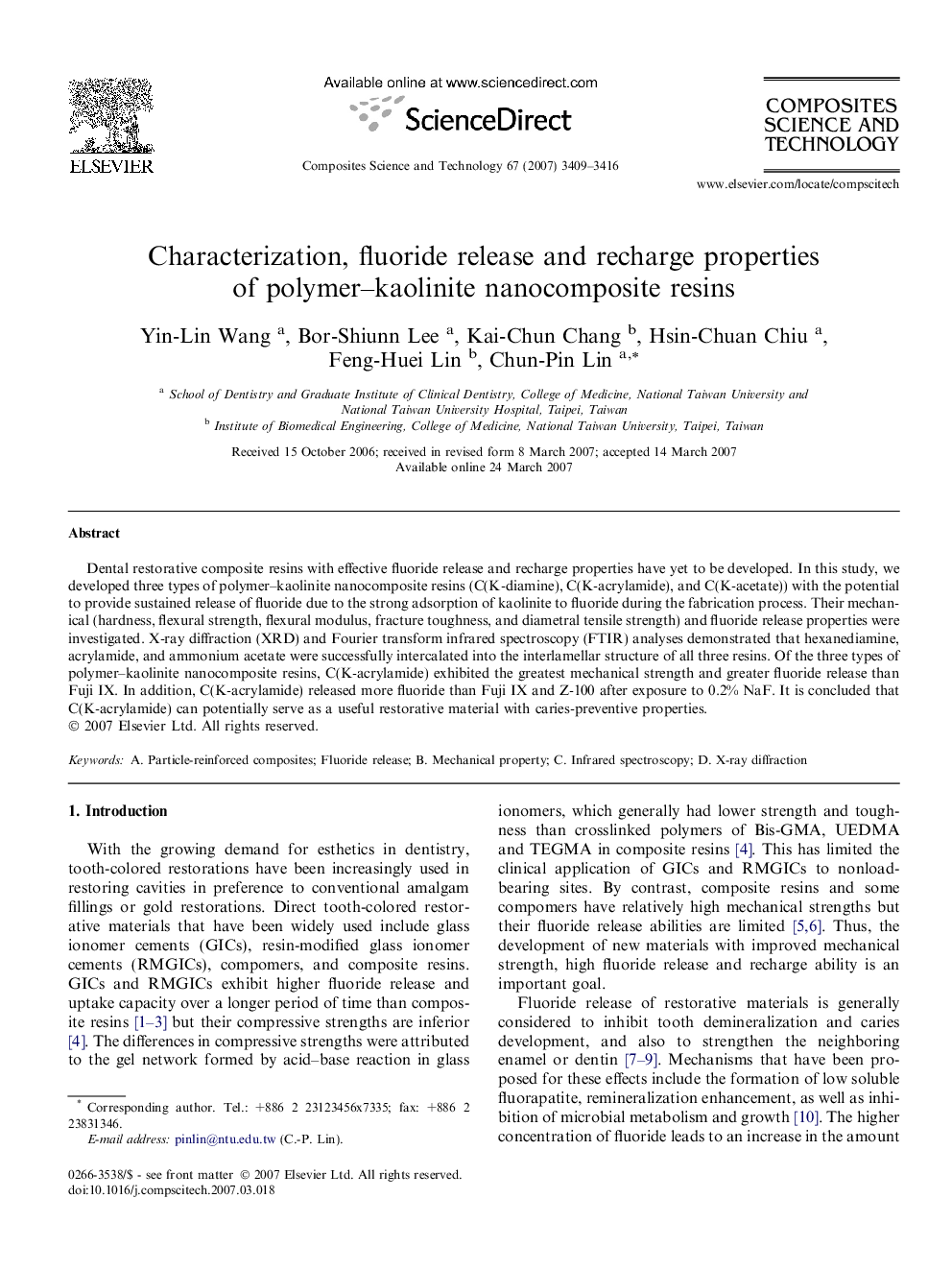| Article ID | Journal | Published Year | Pages | File Type |
|---|---|---|---|---|
| 821705 | Composites Science and Technology | 2007 | 8 Pages |
Dental restorative composite resins with effective fluoride release and recharge properties have yet to be developed. In this study, we developed three types of polymer–kaolinite nanocomposite resins (C(K-diamine), C(K-acrylamide), and C(K-acetate)) with the potential to provide sustained release of fluoride due to the strong adsorption of kaolinite to fluoride during the fabrication process. Their mechanical (hardness, flexural strength, flexural modulus, fracture toughness, and diametral tensile strength) and fluoride release properties were investigated. X-ray diffraction (XRD) and Fourier transform infrared spectroscopy (FTIR) analyses demonstrated that hexanediamine, acrylamide, and ammonium acetate were successfully intercalated into the interlamellar structure of all three resins. Of the three types of polymer–kaolinite nanocomposite resins, C(K-acrylamide) exhibited the greatest mechanical strength and greater fluoride release than Fuji IX. In addition, C(K-acrylamide) released more fluoride than Fuji IX and Z-100 after exposure to 0.2% NaF. It is concluded that C(K-acrylamide) can potentially serve as a useful restorative material with caries-preventive properties.
